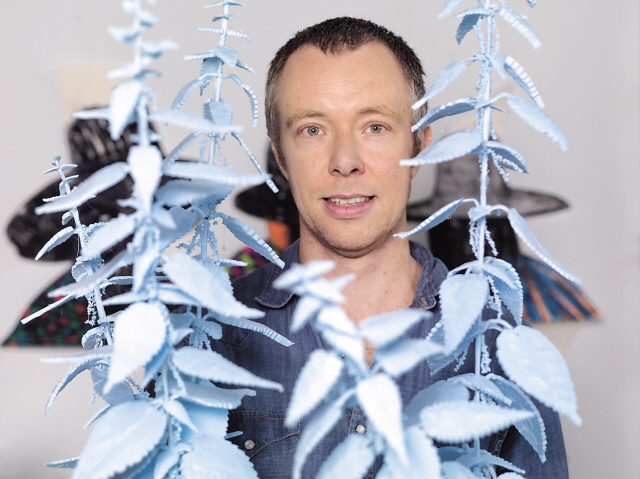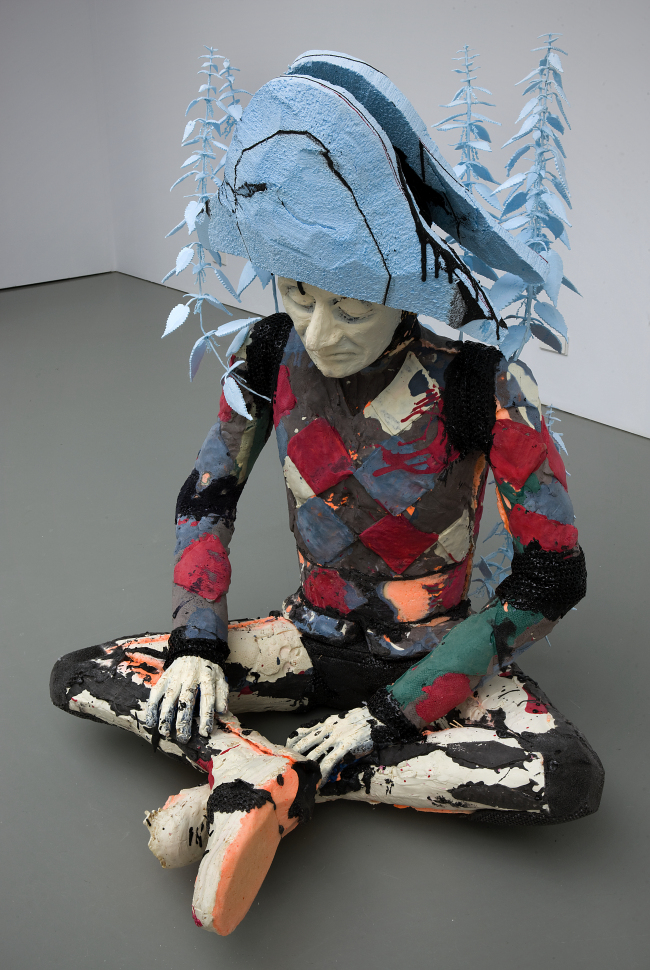Making sense of waste
2012-11-04 19:51
The faces and gestures of Dutch artist Folkert de Jong’s human body sculptures look relaxed and joyful, without that serious aura that often leads viewers of artwork to struggle to make sense of what they see.But behind the sculptures’ happy demeanors, de Jong has hidden some important meanings, represented in the materials used for his sculptures.
De Jong is well-known for using industrial materials such as Styrofoam and polyurethane foam and imbuing them with social and political meaning.
“The materials are a result of mass consumption and are environmentally unfriendly. The factories produce them endlessly which I see as self-destructive,” de Jong told The Korea Herald at the opening reception of his first exhibition in Korea on Oct. 25.
A much-celebrated artist among young Korean art students and artists, de Jong is holding his solo exhibition at Arario Gallery in Samcheong-dong, Seoul, until Dec. 9.
 |
| Dutch sculptor Folkert de Jong (Aatjan Renders) |
 |
| “The Thinker” by Folkert de Jong (Aatjan Renders) |
He said he finds the process of turning such waste materials into artistic forms interesting and makes them representations of unfairness in our society, such as profiteering by energy companies and their influence on consumers’ purchases.
“Only to make profits, they keep producing the harmful materials. It’s not good for the environment, but people are not so aware of the presence of these materials,” said de Jong.
The colorful human form in a sitting posture, “The Thinker,” is an example of the stark contrast between what appears on the outside and the meaning within. On the back of the sculpture grows what the artist described as an “unpopular plant” seen in ruins near his neighborhood.
The person is a recreation of a circus man from Picasso’s “Les Saltimbanques,” a painting of miserable-looking circus performers.
“They make people happy in their circus costumes, but at the same time they live a miserable life being outcasts of their society,” de Jong explained.
What interests him is also the contrast between spirituality and artificiality as shown in his drawings displayed along with sculptures. “The Oil Master,” a drawing of an Indian guru sitting in a meditative pose, is an example of his endeavor to seek spirituality behind materials and artificiality.
But an encounter with an Indian guru never took place in reality.
“The oil scientist I met when I was researching an oil company was from India and he looked like a spiritual guru,” said de Jong.
While the artist imbues his artworks with serious meaning, he hopes his audience at first views his works without feeling burdened by his serious thoughts.
“I don’t want to be a moralist, because otherwise my work will look boring. So I try to make my subject light so that people can find fun. But at the same time it makes it possible to speak about serious subjects without being depressed,” said de Jong.
“You don’t want to confront something serious and heavy all the time.”
The exhibition “The Bull’s Eye” continues through Dec. 9 at Arario Gallery in Samcheong-dong, Seoul. For more information, call (02) 723-6190.
By Lee Woo-young (wylee@heraldcorp.com)


